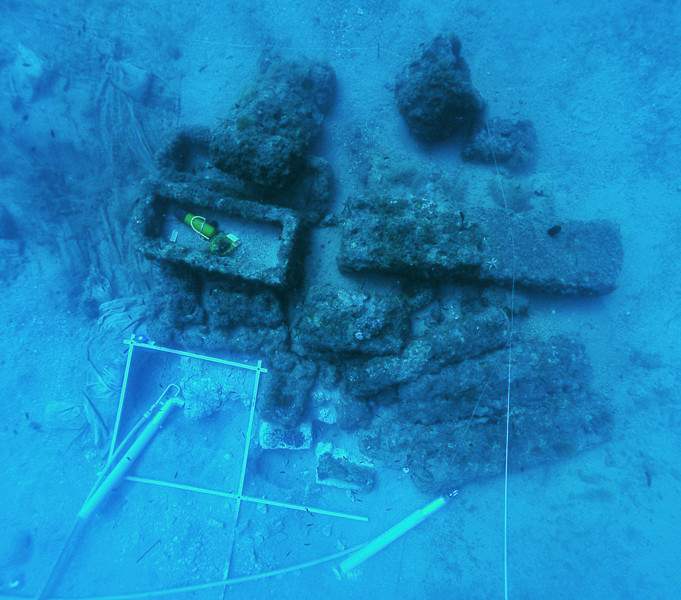
SHIPWRECK WITH SARCOPHAGI
DEPTH: 30 - 32 m
SKILL: Advanced
Ancient merchant ship for coastal trade; origin not precisely confirmed
Period: end of 2nd century A.D.
Sunk: cause was most probably bad weather (“bura”) and waves which engulfed the loaded ship
Coordinates: 43.39453° N, 16.46069° E
Location: Island of Brač, Sutivan, 700 metres north of the cove of Livka
Access: 2/5 access is possible solely by boat from Split or from nearby Sutivan
Visibility: 3/5 due to the sandy-silty bottom often worse
Current: 4/5 almost none, sometimes weak
Flora and fauna: 2/5 specimens of small groupers under the stone blocks
HISTORY:
Ancient ships as the main means of transporting people and goods carried diverse cargoes. It is generally known that these were most often amphorae, filled with oil, wine, salted fish and dried fruit etc. With dimensions larger than amphorae, dolia (Greek: pithos, Latin: dolium) were mostly filled with grain. However, from a number of examples from the Mediterranean Sea it is clear that there was almost no kind of goods that were not transported by ships. On the Eastern Adriatic coast in Antiquity there were about ten stone quarries, directly on the coastline that enabled loading onto ships. Ordinary limestone was mostly quarried, but also quality stone, especially from the island of Brač which was used from the 3rd century.
From the Aegean region there also originated stone blocks found at the Cape of Izmetište. On the island of Susak, near the Cape of Margarin, 11 stone pillars and several stone blocks were found. However, right at the underwater localities at which were found valuable stone products – sarcophagi speak of the purchasing power of the citizens on the Eastern Adriatic in Antiquity. Since the 1970’s a site was known featuring elements of sarcophagi on the south-eastern part of the island Mljet (Veli Školj). In the Southern Adriatic region there also exists a site along the northern coast of the island of Jakljan. Although this locality has not been investigated, three sarcophagi together with lids in the form of roofs have been recorded.
In the autumn of 2008 great professional and public interest was aroused by the discovery of a shipwreck with a cargo of sarcophagi near the settlement of Sutivan on the island of Brač.
CONDITION OF THE LOCALITY AND DIVING
As soon as the diving began on the location of the site itself it became obvious that it was an ancient ship with a cargo of sarcophagi and other semi-finished stone products. The finds are located at a depth of 32 metres, and the remains lie on a sandy bottom with a gentle slope. The finds spread out over approximately 40 square metres. Twenty stone artefacts are placed in two rows, with the lower row being practically completely sunken in the sand. A diver can recognise seven sarcophagi, two sarcophagus’ lids, one stone bowl for oil, one pillar and several stone made objects. Apart from the stone bowl, which most likely rolled over during the sinking, the stone products lie on the seabed in exactly the same way in which they were arranged in the ship. It is assumed that the ship was somewhat wider than 5 metres, and 15 or at most 18 metres long. The analysis of fragments from the stone bowl show that it is made from a kind of limestone which is found on the island of Brač, and only in certain locations from the surroundings of Sutivan, Splitska or Babin Loz.
The location itself is situated on a sandy and fairly flat bottom. Due to such a seabed and the weak current poor visibility is possible. As the locality is located approximately 700 metres from the cove of Livka a boat is necessary, and an ideal base to set off diving is nearby Sutivan. The location is ideal for a short dive due to the concentration of finds over a small surface area. It is suitable for organised diving and for less experienced amateurs who have a special interest in such diving destinations. Fish are rarely seen, only occasionally small groupers which find shelter amongst the rocks. Due to the dive into the blue and to ease of emersion it is recommended to set a rope with a buoy which leads to the wreck.
The description and illustrations are a courtesy of Danijel Frka and Jasen Mesić. Buy the whole book here: https://shop.naklada-val.hr/product_info.php?products_id=561
Period: end of 2nd century A.D.
Sunk: cause was most probably bad weather (“bura”) and waves which engulfed the loaded ship
Coordinates: 43.39453° N, 16.46069° E
Location: Island of Brač, Sutivan, 700 metres north of the cove of Livka
Access: 2/5 access is possible solely by boat from Split or from nearby Sutivan
Visibility: 3/5 due to the sandy-silty bottom often worse
Current: 4/5 almost none, sometimes weak
Flora and fauna: 2/5 specimens of small groupers under the stone blocks
HISTORY:
Ancient ships as the main means of transporting people and goods carried diverse cargoes. It is generally known that these were most often amphorae, filled with oil, wine, salted fish and dried fruit etc. With dimensions larger than amphorae, dolia (Greek: pithos, Latin: dolium) were mostly filled with grain. However, from a number of examples from the Mediterranean Sea it is clear that there was almost no kind of goods that were not transported by ships. On the Eastern Adriatic coast in Antiquity there were about ten stone quarries, directly on the coastline that enabled loading onto ships. Ordinary limestone was mostly quarried, but also quality stone, especially from the island of Brač which was used from the 3rd century.
From the Aegean region there also originated stone blocks found at the Cape of Izmetište. On the island of Susak, near the Cape of Margarin, 11 stone pillars and several stone blocks were found. However, right at the underwater localities at which were found valuable stone products – sarcophagi speak of the purchasing power of the citizens on the Eastern Adriatic in Antiquity. Since the 1970’s a site was known featuring elements of sarcophagi on the south-eastern part of the island Mljet (Veli Školj). In the Southern Adriatic region there also exists a site along the northern coast of the island of Jakljan. Although this locality has not been investigated, three sarcophagi together with lids in the form of roofs have been recorded.
In the autumn of 2008 great professional and public interest was aroused by the discovery of a shipwreck with a cargo of sarcophagi near the settlement of Sutivan on the island of Brač.
CONDITION OF THE LOCALITY AND DIVING
As soon as the diving began on the location of the site itself it became obvious that it was an ancient ship with a cargo of sarcophagi and other semi-finished stone products. The finds are located at a depth of 32 metres, and the remains lie on a sandy bottom with a gentle slope. The finds spread out over approximately 40 square metres. Twenty stone artefacts are placed in two rows, with the lower row being practically completely sunken in the sand. A diver can recognise seven sarcophagi, two sarcophagus’ lids, one stone bowl for oil, one pillar and several stone made objects. Apart from the stone bowl, which most likely rolled over during the sinking, the stone products lie on the seabed in exactly the same way in which they were arranged in the ship. It is assumed that the ship was somewhat wider than 5 metres, and 15 or at most 18 metres long. The analysis of fragments from the stone bowl show that it is made from a kind of limestone which is found on the island of Brač, and only in certain locations from the surroundings of Sutivan, Splitska or Babin Loz.
The location itself is situated on a sandy and fairly flat bottom. Due to such a seabed and the weak current poor visibility is possible. As the locality is located approximately 700 metres from the cove of Livka a boat is necessary, and an ideal base to set off diving is nearby Sutivan. The location is ideal for a short dive due to the concentration of finds over a small surface area. It is suitable for organised diving and for less experienced amateurs who have a special interest in such diving destinations. Fish are rarely seen, only occasionally small groupers which find shelter amongst the rocks. Due to the dive into the blue and to ease of emersion it is recommended to set a rope with a buoy which leads to the wreck.
The description and illustrations are a courtesy of Danijel Frka and Jasen Mesić. Buy the whole book here: https://shop.naklada-val.hr/product_info.php?products_id=561

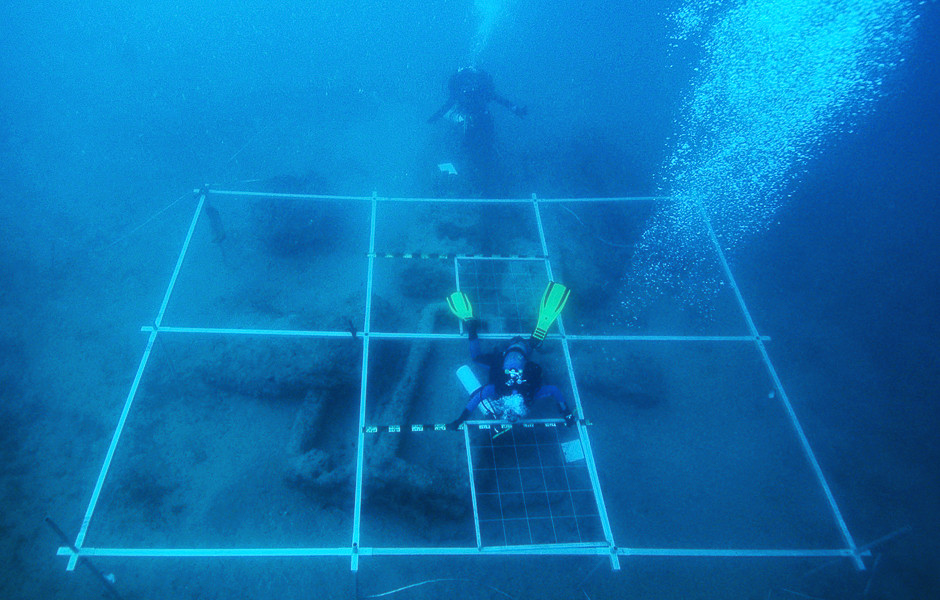
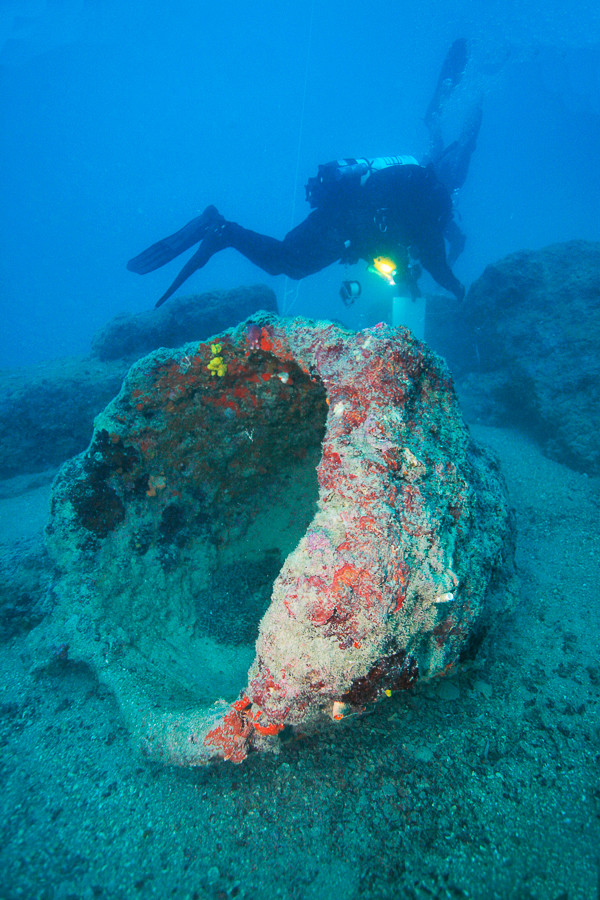
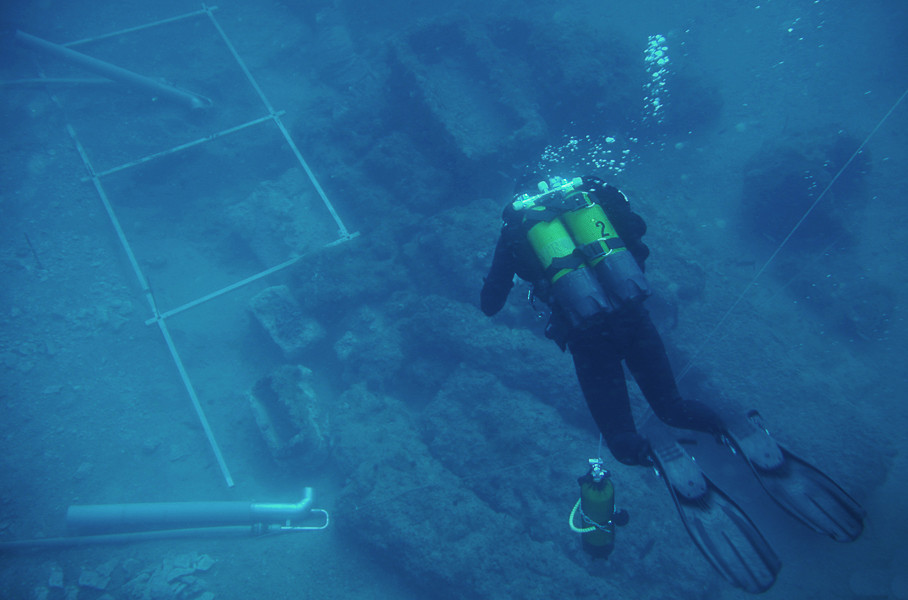
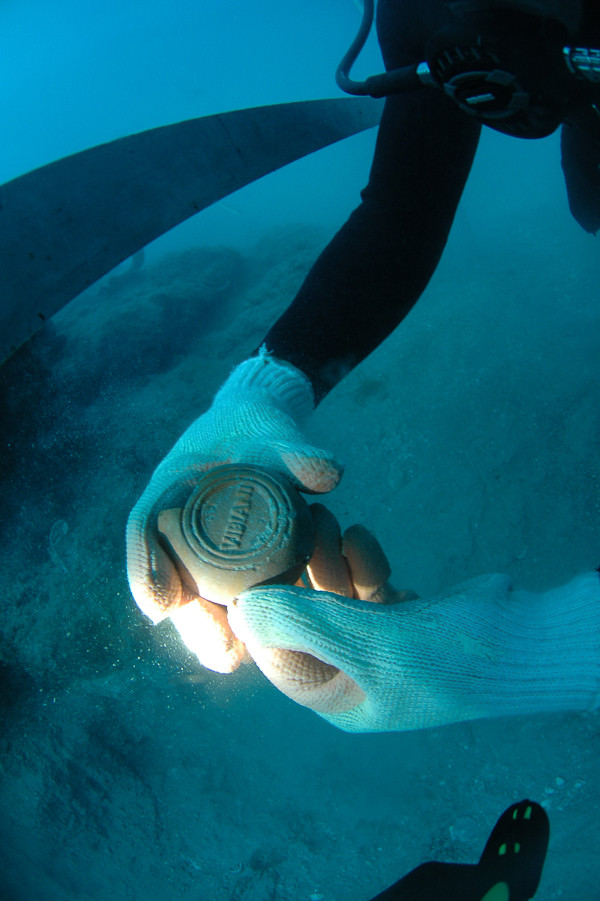
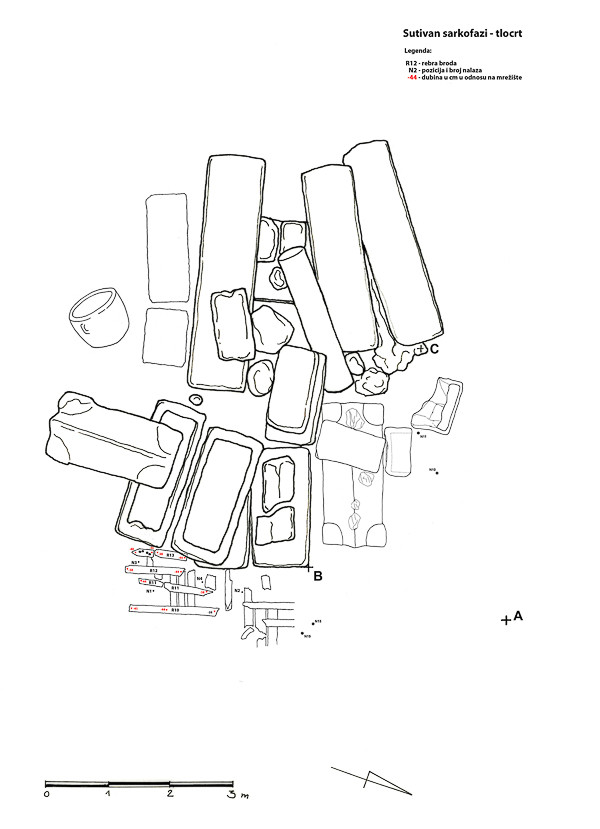

 The investment is co-financed by the Republic of Slovenia and the European Union from the European Regional Development Fund.
The investment is co-financed by the Republic of Slovenia and the European Union from the European Regional Development Fund.  H2O Globe BETA
H2O Globe BETA